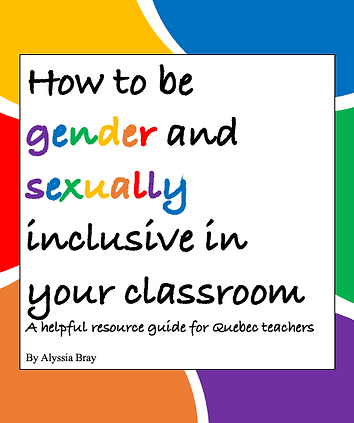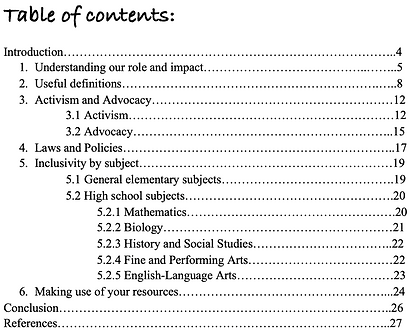top of page

Professional Competency 7
Professional competency 7 deals with taking into account student diversity. This means that we must understand that all students come from different walks of life, having had various experiences. This means that we must focus on creating diverse, differentiated lessons to accommodate all of our students and to show them that we respect them for who they are and will do what it takes to ensure that they are able to successfully complete the year in our subject.
My development
I believe that I have had some opportunity to truly develop this competency, mostly throughout my final internship. During my second and third placements, I considered cultural diversity but did not have any students who had an individualized education plan (IEP). During my final field experience, we had multiple students that we were developing IEPs for therefore I had the opportunity to see what behaviours and actions the teachers and staff were observing and the strategies that were being considered to help them. I also had the opportunity to implement certain strategies for the students that already had IEPs. Therefore, I would say that I am at a “thorough” level of mastery in this competency.
Artefacts
These images demonstrate IEP strategies that I implemented as a taught. One student has difficulty writing, they are a very slow scribe although they are smart and know the answers. Therefore, to help them with the work, I will ask what sentence they want to write and will trace it for them or colour code each word so that they have a visual to follow which makes the task easier for them. We also had a student with severe ADHD that I would give different sensory chairs to keep him seated and focused on his work for periods of time. Finally, there are other students that we helped with visual aids as well as they have difficulty writing without them.
click on images to open corresponding documents
In this unit plan, created during one of my courses, we needed to differentiate based on the Response to Intervention (RTI) tiered system. We planned out a unit and then differentiated into 3 tiers. Tier 1 being for students who would have no difficulty in completing the work required of them. Tier 2 would be for students who had slight difficulties and that would require slightly more guidance from the teacher or peers. Tier 3 would be for the students that had severe difficulties with the tasks and would require constant help and guidance from the teacher to successfully complete the work. This assignment allowed me to practice the differentiation of lessons to consider student needs and diversity in the classroom.
click on image to open corresponding document
This unit plan was created during one of my bachelor courses. We needed to create a Differentiated Unit Plan in which we explained what the subject, information and final project would be. We then needed to differentiate all of the work to fit the various needs of the students based, once again, on the Response to Intervention 3 tier system. For this lesson we also needed to provide the instruction handouts that would be provided to students in the various tiers to demonstrate that we properly understood how to successfully create a truly differentiated unit plan.


I developed this guide as a resource that teachers can use to create gender and sexually inclusive classrooms. Too often, teachers are asked to do things or take on responsibilities that they have no have appropriate or complete training on. This document will help to provide clear and concise ways in which all Quebec teachers, regardless of subject or grade level, can learn how to go about creating these inclusive spaces for their students.
bottom of page





